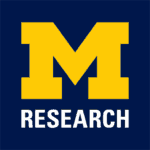Exploring the long-term effects of concussions in athletes, military service members
Video by Eric Shaw
Concussions are a fundamental concern facing the United States military, the sports medicine community and society at large. Supported by a $42 million award from the NCAA and the Department of Defense, University of Michigan Professor Steven Broglio and his colleagues are leading the largest-ever concussion and repetitive head impact study. Their findings aim to uncover long-term effects of concussions in student-athletes and military service members.
“It’s about the health and safety of the athletes and whether that’s policy change for injury prevention or informing medical care for the athletic trainers, and the physicians and the sideline staff. That’s the main goal – health and safety.”
Article by Kelsey Keeves
Steve Broglio, founding director of the Michigan Concussion Center, appreciates the immediate impact a study can have when research findings translate to clinical practice or influence policy.
A recent change to the National Collegiate Athletic Association (NCAA) football schedule was influenced by a Concussion Assessment, Research and Education (CARE) Consortium study on the impact of preseason football concussion rates and head impact exposure.
The Department of Defense and the NCAA funded the CARE Consortium to facilitate research related to concussion and repetitive head impact exposure in United States Military Service Academy cadets and collegiate student athletes. Since its establishment in 2014, the consortium has collected the most diverse concussion dataset of its kind and generated more than 100 scientific papers.
“It’s about the health and safety of the athletes and whether that’s policy change for injury prevention or informing medical care for the athletic trainers, and the physicians and the sideline staff. That’s the main goal – health and safety.”
Broglio began researching the effects of head impact exposure while working in his undergraduate advisor’s laboratory at the University of North Carolina at Chapel Hill. This work – entering data, running tests and eventually supervising his own projects – sparked his interest in studying concussion prevention, identification and management.
Broglio earned his Ph.D. in exercise science from the University of Georgia, and after teaching at the University of Illinois at Urbana-Champaign for five years, he joined U-M’s School of Kinesiology and School of Medicine in 2011.
His background in athletic training allows him to understand how a policy change would influence the day-to-day activities of athletic departments.
“It gives me a lens or an insight into that domain, that field, to always think about what’s actually doable.”
The opportunities and resources offered at U-M were a critical factor in Broglio’s decision to come to Ann Arbor. U-M’s ability to bring interdisciplinary units together to support researchers allows him to plan innovative projects that were previously out of reach.
“I am just continually amazed at what’s available at U-M.”
Early in his career, Broglio strategized how he could find the resources to expand the scope of his research and learn more about the long-term effects of concussions.
“I had this vision. I talked to somebody in the Provost’s Office six or seven years ago and asked what it would take to get a center. Because I was so young and naive then, I had no idea how difficult it would be. And now it’s here.”
One of his goals for CARE is to build the foundation for research that will eventually create a better understanding of the long-term effects of concussions and how head impact exposure impacts neurological disorders beyond chronic traumatic encephalopathy (CTE), such as Parkinson’s disease and Alzheimer’s disease.
